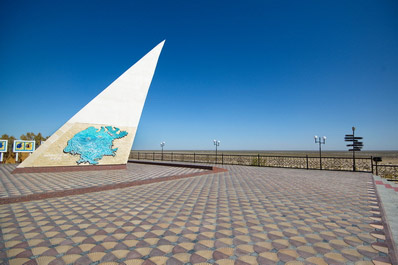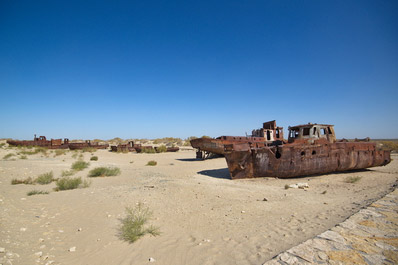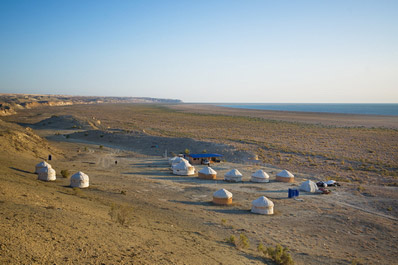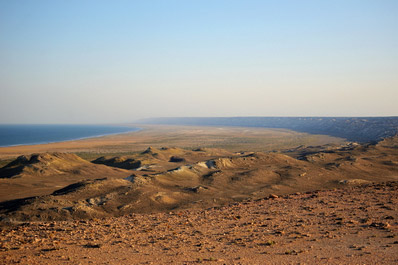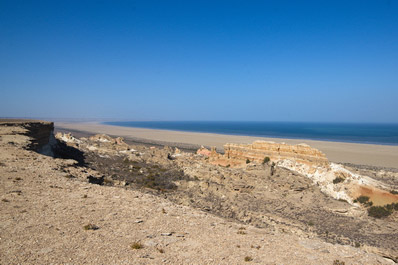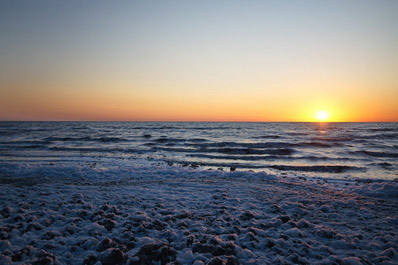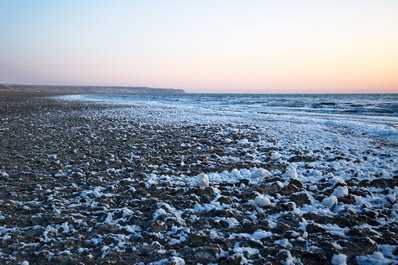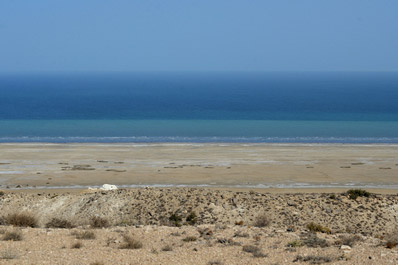Aral Sea, Karakalpakstan
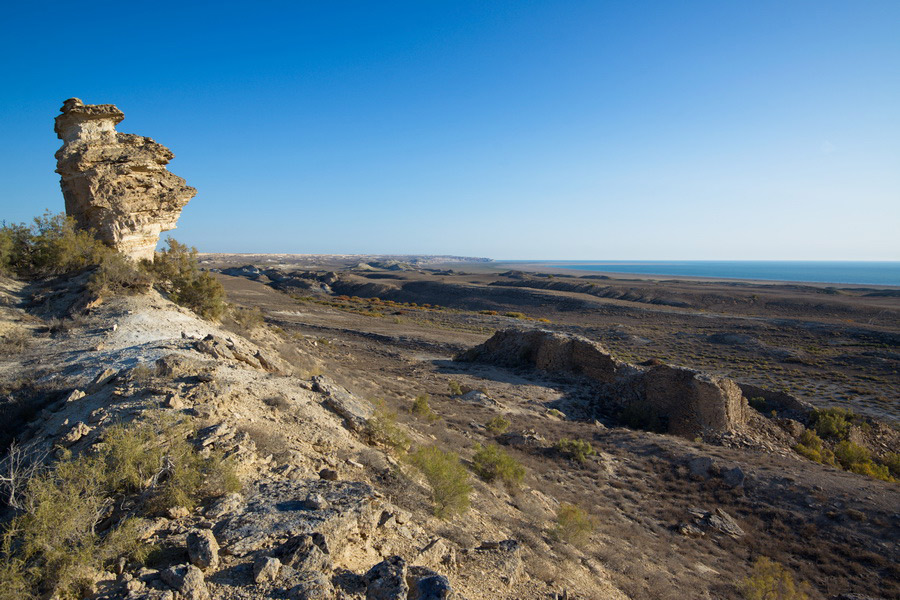
Square: 7297-8303 km²
Volume: 75 km²
Flowing rivers: Syr Darya and Amu Darya.
Countries: Uzbekistan, Kazakhstan
Phone code: +998 61
Zip code: 2308XX
Automobile codes: 95-99
Regions: Karakalpakstan, Aktobe region, Kyzylorda region
The Aral Sea region is undeniably one of the most distinct and poignant places on the planet. Once boasting the title of the world's fourth-largest lake until mid-20th century, its transformation tells a somber tale. The decline began in the 1960s, due to overuse and mismanagement of its water sources, and it's a trend that sadly continues. Comparing satellite imagery from the 1980s to present day reveals a startling transformation.
Deemed by the World Meteorological Association as the 20th century's greatest man-made ecological disaster, the sea's expanse has reduced by almost 90% in over six decades. This reduction led to the extinction of many fish species and a significant decline in the surrounding wildlife.
Visiting the Aral Sea is arguably Uzbekistan's most surreal experience. Instead of roads, you find yourself driving on the former lakebed, now a vast desert. The area remains sparsely populated but draws visitors worldwide who yearn for solitude and to witness first-hand the consequences of human intervention on nature.
Brief History of the Aral Sea
Researchers believe that the salty and landlocked Aral Sea formed roughly 17,000 years ago and was once teeming with biodiversity. Its name, "Aral," derived from Turkic languages, means "island" or "archipelago."
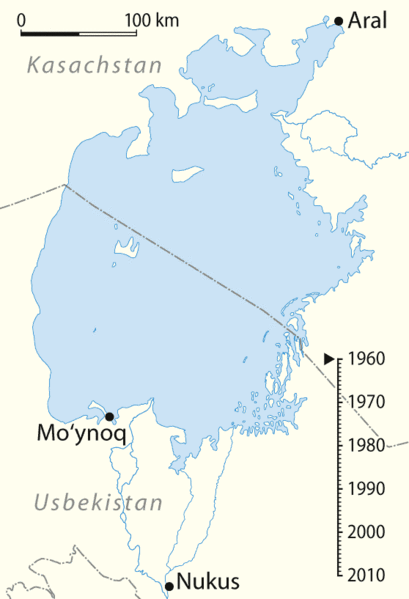
The lake, which spanned 66,100 square kilometers till the 1960s, saw its area nearly cut in half by the close of the 1980s, primarily due to agricultural demands for water. The rate of depletion escalated, and by 1995, a mere quarter of its original water volume remained. Increased salinity led to the death of its fish and affected the coastal wildlife. A few fish species persist today but contain harmful substances.
The Aral Sea now consists of the Northern (Small) and Southern (Large) segments. The latter further split, with one section completely drying up in 2014. This revealed the Aralkum desert, also known as Akkum or "white desert", named for its vast salt-covered expanses. Despite its harsh conditions, pockets of vegetation can still be found.
The health of the local populace has suffered due to the changing environment. Increases in cancer, diabetes, anemia, and vision issues have been reported. Poor-quality drinking water plagues the region, prompting many to buy bottled water.
The Aral Sea crisis extends beyond Central Asia. Its effects have been felt globally. Harmful salts from the Aral Sea have been detected in Antarctic penguins, while salt dust from Aralkum has traveled as far as Belarus, Norway, and Greenland.
Attractions of the Aral Sea
There are not so many sights in the Aral Sea area, and all of them are not the most racy.
The most famous place of attraction for tourists is the cemetery of ships in Muynak. Once there was a large port city here, where dozens of ships arrived daily. Today, only iron "skeletons" are left of the ships. Here you can get impressive photos, and impressions from visiting this abandoned place remain for a lifetime.
Kurgancha-Kala (Davletgirey) - a fortress of X-XIII centuries, located near the yurt camp on the shore of the Aral Sea, has survived only partially. Here you can see the tower and the remains of the city walls.
Kungrad is a small town in Karakalpakstan, which is interesting to visit from the point of view of studying the life of local people.
You can also visit Nukus, the capital of Karakalpakstan. Two notable museums in the area are the Berdakh Karakalpak State Museum and the more renowned Savitsky State Museum of Arts, which also features a local history section. Notably, the Savitsky Museum ranks second globally for its extensive collection of abstract, constructivist, and suprematist art pieces.
How to get to the Aral Sea
The most convenient way to get to the Aral Sea is from Nukus. There are regular flights from Tashkent and Moscow.
You can also come to Nukus by train from Tashkent, Samarkand, Bukhara and Urgench.
You can also get to Nukus by car from Urgench (165 km). There are regular flights to Urgench from Tashkent, Moscow, St. Petersburg, Makhachkala, Baku and Istanbul.
It is better not to use road transport from other major cities of Uzbekistan - the distance is not one hundred kilometers.
Please note that the road from Nukus to Aral will take more than three hours, almost half of the way will have to go off-road - this is the dried up bottom of the once large sea. And an ordinary car will not pass to Aral, it is better to use an off-road vehicle.
Which Karakalpak dishes should you try while at the Aral Sea?
The national Karakalpak cuisine in the Aral region will surprise any gourmet. In addition to traditional beef and mutton, here they like to cook from camel and horse meat. Be sure to try Karakalpak beshbarmak with camel meat and tea with camel milk.
Zhueri gurtik (zhuregi gurtik) will not leave Aral's guests indifferent either. These are round dumplings made of dzhugar flour with meat or with onions and potatoes.
We recommend to try durama (turama) - a dish of finely chopped boiled meat with dumplings. The dish is served with broth and seasoning made of solidified fat and finely chopped onions.
Souvenirs from the Aral Sea Region
For those looking to take home a piece of the Aral Sea, there's a variety of keepsakes to choose from. Classic souvenirs like magnets are readily available. However, if you're looking for something more unique, consider a tin can filled with 'Aral air'. For enthusiasts of traditional items, an embroidered Karakalpak skullcap is a must-have.
Safety Tips for the Aral Sea Region
The Aral Sea area is generally safe for visitors. While human encounters outside urban centers are rare, it's wise to avoid wandering the desert alone due to potential encounters with wildlife and predatory birds. If visiting during the summer, it's essential to be prepared: pack sunscreen, a hat, and long-sleeved clothing to protect against sunburn and heatstroke.
Best Time to Visit the Aral Sea
The Aral Sea region experiences cold, prolonged winters and intensely hot summers. The best time to visit the Aral Sea is April-May and August-October. Be mindful that the climate is exceptionally dry; rain is a rare occurrence, but dust storms can be frequent.


